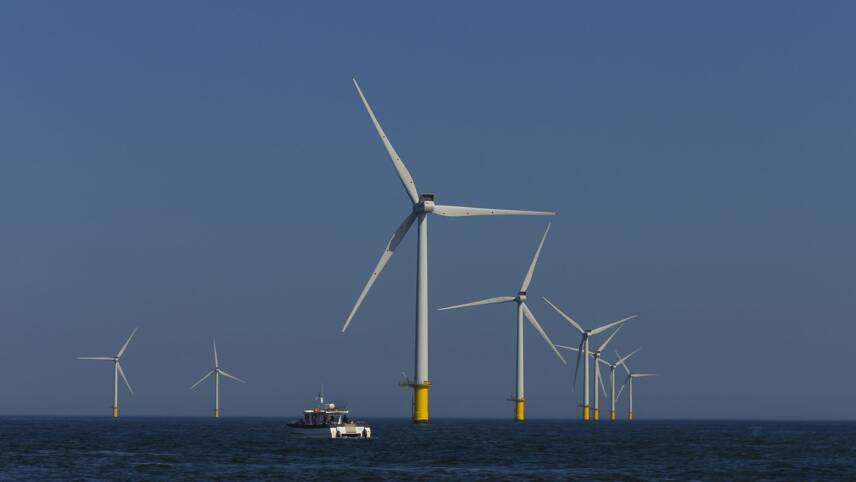Register for free and continue reading
Join our growing army of changemakers and get unlimited access to our premium content

Pictured: The Rampion wind farm off the coast of Sussex
That is according to the Crown Estate’s tenth annual Offshore Wind Report, published on Tuesday (5 July).
The analysis found that global offshore wind capacity reached more than 48.2GW, of which more than 20% came from the UK. The report adds that, by the end of 2021, the capacity of fully commissioned sites in the UK had reached 11.3GW – an 8% increase compared to 2020.
Offshore wind energy generation in 2021 was enough to cover the needs of 33% of UK homes. In 2011, this figure was just 4%.
The size of projects under construction is now ten times bigger than it was in the early 2000s, now averaging around 1GW.
The Crown Estate’s managing director for marine Huub den Rooijen said: “The past year has seen a series of significant shifts in the wider context of offshore renewables in the UK, from cost of living concerns to a heightened focus on energy security, through to understanding the pace and scale of the change needed to achieve the UK’s growing Net Zero ambitions.
“This year’s report paints a picture of a sector committed to meeting these challenges in responsible and innovative ways, and which has laid solid foundations for the continued expansion, and long-term success, of the offshore wind industry within the UK. We look forward to continuing to work closely with all our customers and stakeholders, and in particular thank those who have provided content for this report.”
Global standing
Despite the impressive growth in offshore in the UK, China has leapfrogged the nation as a world leader in this technology.
China’s recent clean energy drive has seen the nation leapfrog the UK as the world leader in offshore wind capacity, with research revealing that the nation added more capacity in 2021 than what the world had produced over a five-year period.
China installed 26GW of new offshore wind capacity in 2021, the nation’s Energy Administration revealed. This massive increase means that China now accounts for more than half of the world’s total offshore wind capacity and Carbon Brief has since confirmed that the 26GW added in 2021 is more than what the entire world has produced over a five-year period.
The UK Government notably has a commitment for the nation to host 40GW of offshore wind by 2030, with forecasts for costs falling and capacity increasing in recent years.
In 2020, BEIS slashed its forecasts for offshore wind energy costs through to 2030 by more than half, in the first update to predictions since 2016. The department amended projections for offshore wind projects which come online between now and 2030 will produce power at an average cost of £47 per megawatt-hour over the course of their lifetime. BEIS’s previous forecast had placed the figure at £103 per megawatt-hour.
At the start of the year, Crown Estate Scotland announced the successful bidders under its 2022 ScotWind Auction, which marked the first time in a decade that plots of Scottish seabed have been auctioned to renewables developers.
In total, 17 projects were selected out of a total of 74 applications. Successful applicants have been offered the chance to reserve the rights to specific areas of seabed and, subsequently, to put forward a full agreement for a wind farm.
Collectively, the selected projects have a total capacity of 24.8GW. This is more than double the 10GW that Crown Estate Scotland was forecasting as a minimum for this auction round. Of the 24.8GW, more than 16GW was allocated to floating wind farms, which can be built in deeper waters than their fixed counterparts.
More broadly, the fourth round of the UK Government’s Contracts for Difference (CfD) auction scheme closed earlier this year. It will provide £285m of support annually to low-carbon energy generation, which Ministers are hoping will support 12GW of projects. Offshore wind will be supported, as it always has been – but for the first time in several years, there are also allocations for onshore wind, solar and tidal.


Please login or Register to leave a comment.